Tall garden plants, such as trees and shrubs, can add a majestic beauty to any outdoor space. Unfortunately, their impressive height also means they are prone to falling over in strong winds or storms. This can be dangerous if the plant falls near a person or structure since it could cause damage. Fortunately there are some simple steps you can take to keep your tall garden plants from toppling over.
Recognize when a plant needs support
The first step to preventing tall garden plants from falling over is to recognize when they need additional support.
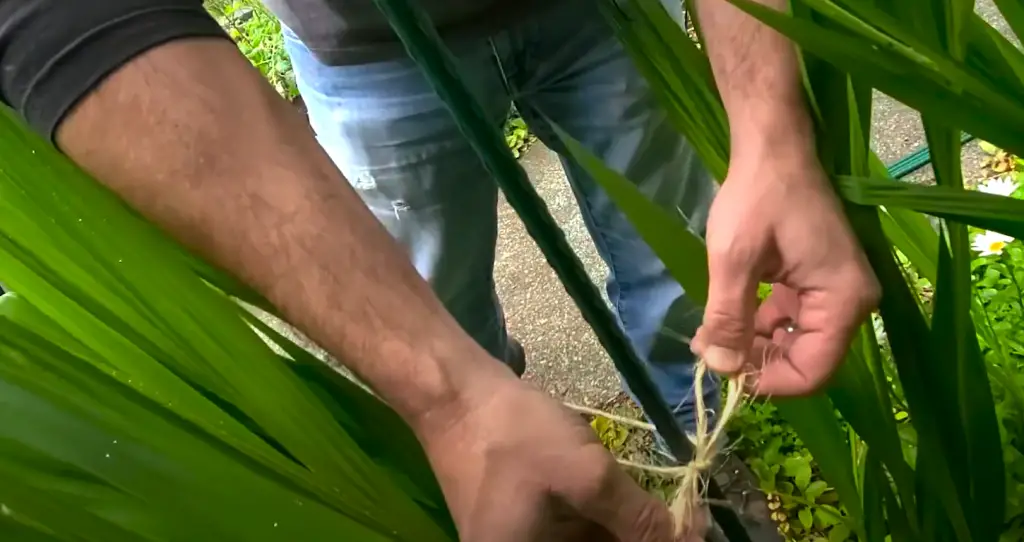
Generally speaking, if a plant has grown more than five feet tall it should be staked or supported in some way. If the stems of the plant are beginning to droop, this is another sign that it needs extra reinforcement.[1]
Recognize when a plant needs repotting
Repotting is another way of keeping tall garden plants from toppling over.
This can make it difficult for the plant to absorb water and nutrients, leaving it weak and more prone to falling over. When transplanting your tall garden plants, choose an appropriately sized pot with the right drainage features.Why support and repotting are important
Supporting and repotting your tall garden plants are important steps to prevent them from falling over. Staking provides the plant with stability, allowing it to better withstand windy conditions. Repotting ensures that the roots have enough space to grow and absorb water, helping the plant stay strong and healthy.
How To Keep Tall Plants From Falling Over as They Grow?
Use Staking or Caging Method
Supporting your tall garden plants with stakes or cages is one of the best ways to keep them from toppling over. This method involves using wooden or metal poles that are placed around the plant. The poles should be long enough to support the height of the plant, and they can be securely fastened with ties at intervals along their length. Staking also helps provide the plant with additional nutrients and water, as it keeps the soil around its roots from drying out.[3]
Place in Big Pots
Placing tall plants in bigger pots is a good way to keep them from falling over.
This also helps the plant absorb more water and nutrients, keeping it healthy and strong.Avoid Placing in Wind Ways and Shade
When planting tall garden plants, it’s important to avoid placing them in windy areas or shady spots.

Wind can easily topple weaker plants, while shade can stop them from receiving enough sunlight. Instead, choose a spot that offers protection from the elements but still gets plenty of sunshine. This will help your tall garden plants stay healthy and upright for longer.
Landscape With Rocks or Wooden Structures
Creating a landscape with rocks or wooden structures around your tall garden plants can help to add extra support. This is especially useful if you live in an area that experiences strong winds and storms. Rocks, logs or other pieces of wood placed around the base of the plant can provide valuable protection from the elements. Additionally, this helps create a unique outdoor space that looks beautiful and adds to the overall aesthetic of your garden.
Use Wind Barriers
Installing a wind barrier around your tall garden plants is another effective way to keep them from toppling over. Wind barriers are made of fabric that can be stretched across the plant’s base and fastened securely with ties or clips. This helps protect the plant from strong winds, as well as helping to absorb any moisture that may come its way.[2]
Use Heavy Or Large Pots
Using heavy or large pots to house your tall garden plants can also help keep them from falling over. The added weight of the pot helps provide additional stability, and its larger size gives the roots more room to grow. Just make sure that it has good drainage features to avoid root rot or other issues caused by overwatering.
Provide Vertical Or Horizontal Support
Providing your tall garden plants with vertical or horizontal support can help keep them from toppling over. This involves using wooden or metal poles to create a frame around the plant, which is then securely fastened into place. This helps provide extra stability for the plant and can help protect it from strong winds and storms.
Avoid Keeping The Plants On Windowsills
You should avoid keeping tall garden plants on windowsills or other areas that are likely to receive strong winds. This is because the air circulation around the plant can cause it to topple over more easily. Instead, keep your tall plants in a sheltered spot where they won’t be exposed to too much wind.[2]
Fill The Pot With River Pebbles Or Other Heavy Material
Filling the pot with river pebbles or other heavy materials can help keep tall garden plants from toppling over. This is because the added weight of the material helps provide extra stability for the plant. Additionally, this helps absorb any excess water in the soil and prevents root rot or other issues caused by overwatering.
Use a Moss Pole or Totem
Using a moss pole or totem is a great way to increase the height of your tall plants without making them too top-heavy.
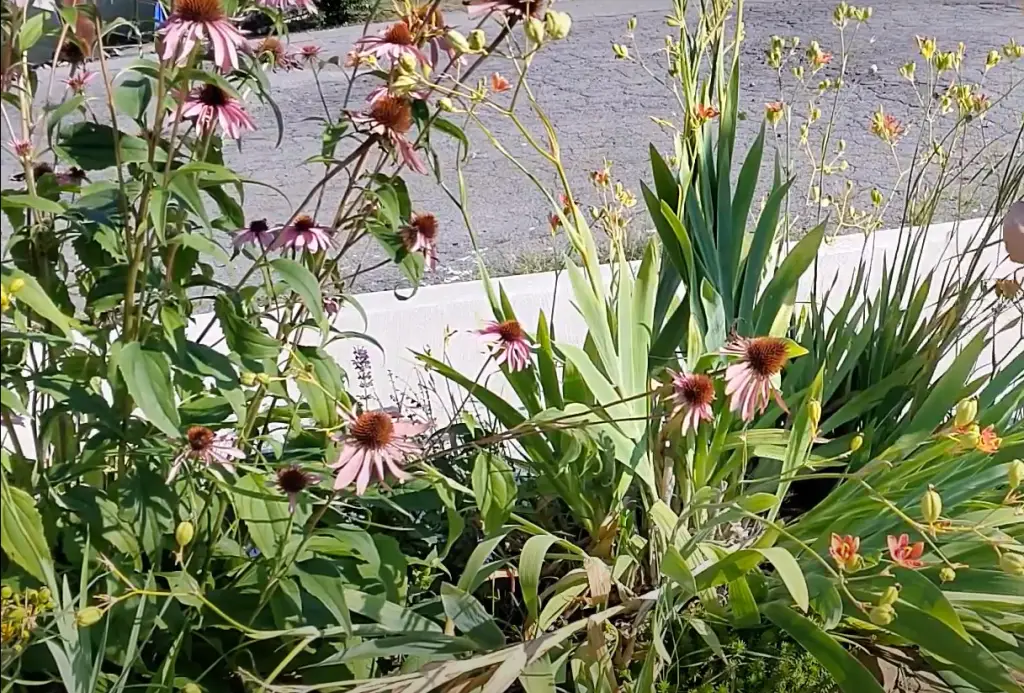
A moss pole or totem is essentially a vertical stake that is placed into the ground near the plant, and it helps provide extra support while encouraging more vertical growth. This provides taller plants with an additional layer of stability, helping to prevent them from toppling over.
Use Bamboo Sticks
Bamboo sticks are another great way to provide support for tall garden plants. Bamboo sticks can be placed around the plant’s base and then tied or clipped together, providing extra stability and helping to keep it from toppling over. Additionally, bamboo sticks help create a beautiful look in your garden that adds an interesting aesthetic element.
Use Pot Stabilizers
Pot stabilizers are specially designed devices that can be used to keep tall garden plants from toppling over. These usually consist of metal rings or plastic collars that fit around the base of the pot and provide additional support for the plant. This helps keep it from falling over, even in windy conditions.[4]
Place The Plant Against A Wall
Placing your tall garden plants against a wall or fence is an easy and effective way to keep them from toppling over. This helps provide additional stability for the plant by offering a physical barrier between it and strong winds. Just make sure that the wall or fence isn’t in direct sunlight, as this can cause the roots to dry out too quickly.
Make Your Plants Inaccessible To Your Pets
If you have pets that like to dig in the garden, it’s important to keep your tall plants out of their reach. This helps ensure that they don’t get knocked over or damaged. Additionally, using a fence or wall around the perimeter of your garden is a good way to deter curious cats and dogs from getting too close.[4]
Improvise A DIY Windscreen/ Windbreak
If you live in an area that experiences strong winds, you can create a DIY windscreen or windbreak to help protect your tall plants from becoming toppled over. This involves using wooden pallets, lattice panels, or other materials to block the wind and provide extra stability for your plants. Just make sure that whatever material you use is securely fastened into the ground so it doesn’t blow away.
Prune The Plants Regularly
Regular pruning of tall garden plants can help keep them from toppling over.
Additionally, this helps promote healthy growth and encourages new shoots to form, making your plants look fuller and more vibrant.Maintenance and Care
In addition to the tips above, providing regular maintenance and care for your tall garden plants will help keep them from toppling over.
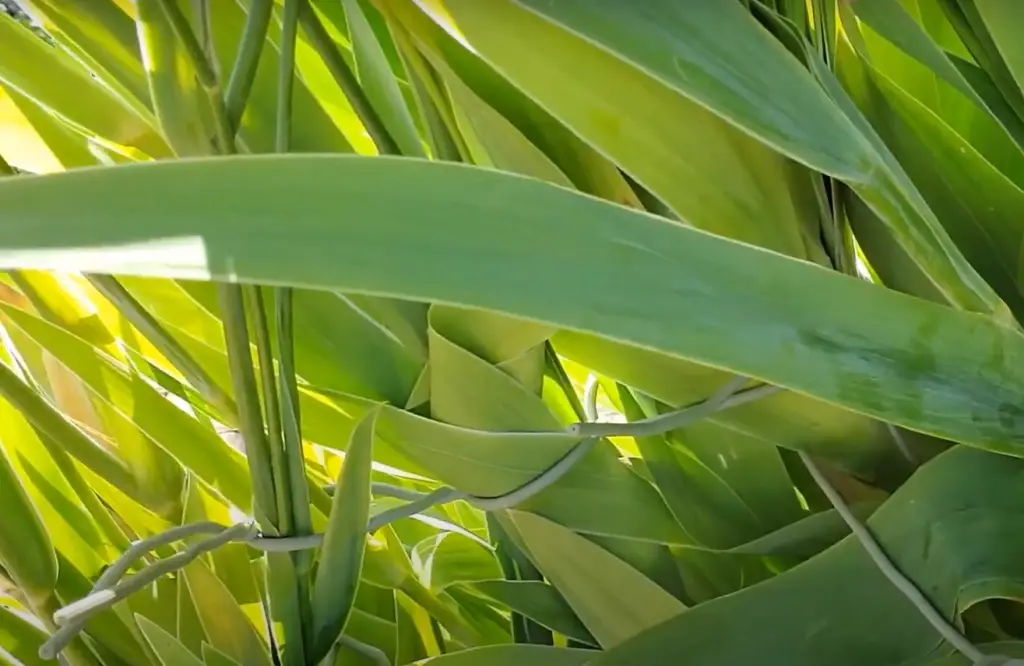
This includes making sure that they get enough water, sunlight and nutrients, as well as regularly checking for pests or diseases. By taking the time to invest in proper care of your tall plants, they’ll be more likely to thrive and be better able to withstand strong winds.[1]
FAQ
What can I use to hold up tall plants?
Using heavy or large pots, vertical or horizontal support systems, moss poles or totems, bamboo sticks, pot stabilizers and placing the plant against a wall are all effective ways of helping to keep tall garden plants from toppling over.
Why is my plant tipping over?
A number of different factors can cause tall plants to topple over, including strong winds, lack of stability from the pot or soil, and inadequate support systems. Additionally, if the plant isn’t receiving enough water, nutrients or sunlight then it may become weak and more susceptible to being toppled over.
What is an alternative to staking plants?
Using pot stabilizers, bamboo sticks or creating a DIY windscreen/ windbreak are all effective alternatives to staking plants. These methods will help provide extra stability for the plant and protect it from strong winds.
What is better than staking?
Using heavy or large pots, vertical or horizontal support systems, moss poles or totems, bamboo sticks and pot stabilizers are all effective alternatives to staking plants. These methods will help provide extra stability for the plant and protect it from strong winds. Additionally, placing your plants against a wall is an easy and effective way to provide more stability without using stakes.
What are the three types of staking?
The three main types of staking are single stake, double stake, and trellised stake. Each type has its own benefits and drawbacks, so it’s important to research them and decide which one will best suit your needs. Single stakes are designed for small or lightweight plants, while double stakes are better for larger or heavier plants. Trellised stakes are ideal for plants that need to be supported over a larger area.
What is the difference between stacking and staking?
Stacking and staking are two different methods of providing support for tall plants. Stacking involves using heavy or large pots, vertical or horizontal support systems, moss poles or totems, bamboo sticks and pot stabilizers to give the plant extra stability. On the other hand, staking involves using wooden or metal stakes that are inserted into the ground around the base of the plant to provide support and prevent it from toppling over.
What is the difference between staking and pooling?
Staking and pooling are two different methods of providing support for tall plants. Staking involves using wooden or metal stakes that are inserted into the ground around the base of the plant to provide additional stability. Pooling, on the other hand, is a method of creating an area of water at the base of a plant which helps keep it from toppling over due to strong winds. Pooling is especially useful for plants that require extra moisture, such as cacti and succulents.
What is staking for beginners?
Staking is a method of providing additional support for tall plants by using wooden or metal stakes that are inserted into the ground around the base of the plant. This helps prevent it from toppling over due to strong winds, as well as providing extra stability for the roots and helping the plant reach its full potential. Staking can be a great way for beginners to get started with gardening, as it’s a relatively simple and straightforward process. Additionally, there are plenty of helpful tutorials online that will provide further guidance on how to properly stake your plants.
Useful Video: 🌻 How To Stake Tall Flowers (Like Crocosmia) – QG Day 99 🌻
Conclusion
Keeping tall garden plants from falling over can be a challenging task, but following the tips and advice outlined in this article can help make it much easier. From providing adequate support to implementing DIY windscreens or windbreaks, there are plenty of effective ways to keep your tall plants from toppling over. Additionally, regular maintenance and care is essential for ensuring that your plants stay healthy and structurally sound. With a bit of effort, you’ll be able to enjoy beautiful tall plants in your garden for years to come!
References:
- https://www.evergreenseeds.com/how-to-keep-tall-plants-from-falling-over/
- https://www.fallsgarden.com/keep-tall-plants-from-falling/
- https://indoorhomegarden.com/how-to-keep-tall-plants-from-falling-over/
- https://www.growgardener.com/how-to-keep-tall-plants-from-falling-over/





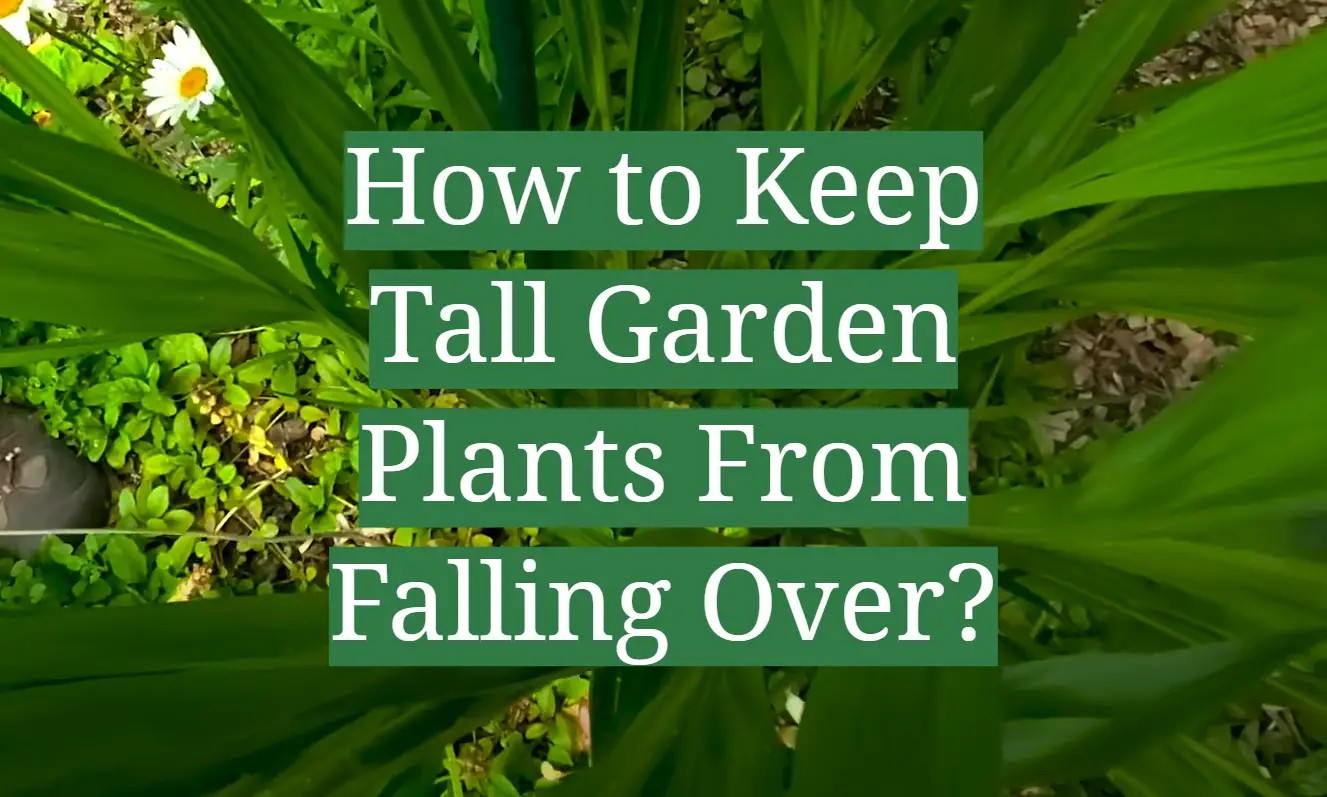
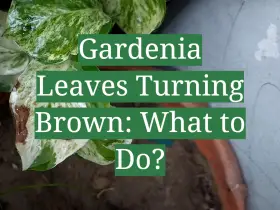
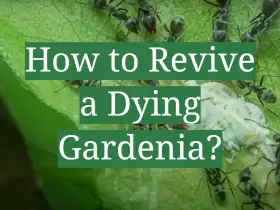

Leave a Reply
View Comments